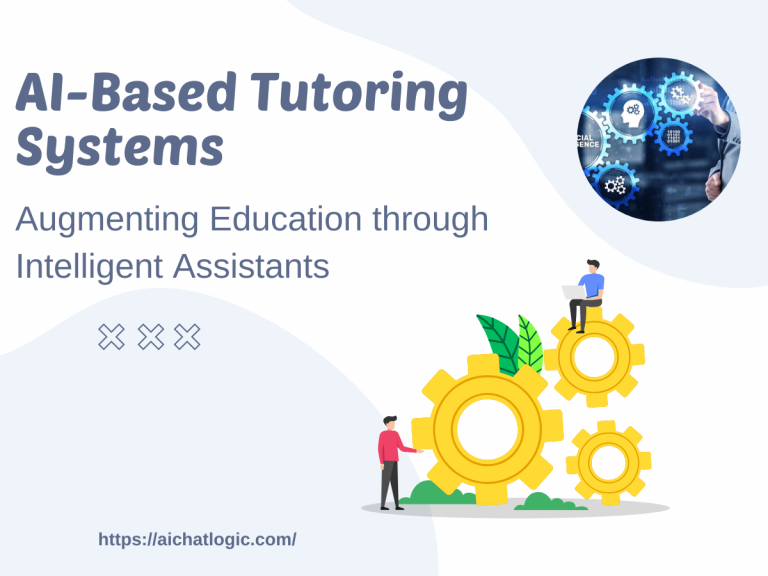AI language models have taken the world by storm, captivating us with their remarkable abilities. From transforming everyday words into extraordinary wonders, these models have revolutionized the way we communicate and engage with technology. The magic lies in their capability to generate text that is so human-like, it’s hard to believe it was created by a machine. They possess the power to weave captivating stories, provide insightful information, and even spark our imagination. AI language models have truly transformed the possibilities of written expression, opening up a world of wonder that continues to astonish and inspire us.
Contents
I. Introduction
A. Definition of AI language models
B. Importance of AI language models in various fields
II. Evolution of AI Language Models
A. Early developments in natural language processing
B. Introduction of deep learning and neural networks
C. Advancements in AI language models
III. Understanding AI Language Models
A. How AI language models work
B. Training and fine-tuning of AI language models
IV. Applications of AI Language Models
A. Content generation and writing
B. Virtual assistants and chatbots
C. Language translation and interpretation
D. Data analysis and prediction
V. The Magic of AI Language Models
A. Generating realistic human-like text
B. Enhancing creativity and storytelling
C. Transforming the writing process
VI. Exploring AI Language Models
A. GPT-3: An overview of OpenAI’s language model
B. Use cases and success stories of GPT-3
VII. Future of AI Language Models
A. Potential advancements and improvements
B. Ethical considerations and challenges
VIII. Conclusion
IX. FAQs
1. How do AI language models learn?
2. Can AI language models replace human writers?
3. Are AI language models biased?
4. What are some limitations of AI language models?
5. How can businesses benefit from AI language models?
I. Introduction
In today’s digital age, AI language models have become an integral part of our lives. These models are designed to understand and generate human-like text, enabling us to communicate with machines more effectively. AI language models have also the ability to comprehend complex queries, analyze vast amounts of data, and provide relevant and coherent responses.
Moreover, they have become indispensable in various fields, ranging from content creation and virtual assistants to language translation and data analysis. Furthermore, the rapid evolution of AI language models has opened up new horizons for creativity, storytelling, and data-driven insights. As we dive into the depths of this fascinating realm, let us explore the magic of AI language models and uncover the wonders they hold for us.
II. Evolution of AI Language Models
The journey of AI language models can be traced back to the early developments in natural language processing (NLP). Initially, rule-based systems were used to process text, but they lacked the ability to understand context and generate meaningful responses. The advent of deep learning and neural networks revolutionized NLP by enabling machines to learn from large amounts of data and improve their performance over time.
Over the years, AI language models have undergone remarkable advancements, and it’s nothing short of magic. With the introduction of transformer-based architectures, such as the Generative Pre-trained Transformer (GPT), the capabilities of AI language models have expanded exponentially. These models now possess the power to understand context, generate coherent and realistic text, and even exhibit a touch of creativity. It’s truly mesmerizing to witness the magic that AI language models bring to the world of language processing and generation.
The evolution of AI language models has been a fascinating journey marked by remarkable advancements. Initially, natural language processing paved the way for early developments in the field. Subsequently, with the introduction of deep learning and neural networks, the capabilities of AI language models expanded exponentially. These models began to demonstrate enhanced language understanding and generation, setting the stage for the transformative advancements witnessed today. Moreover, as research progressed, the introduction of transformer-based architectures, such as the Generative Pre-trained Transformer (GPT), revolutionized the field of AI language models. Consequently, the performance and capabilities of these models reached new heights, enabling them to understand context, generate coherent text, and exhibit creativity. The evolution of AI language models showcases the relentless pursuit of innovation and the extraordinary possibilities that lie ahead.
III. Understanding AI Language Models
AI language models undergo training using vast amounts of text data, including books, articles, and websites, to learn the patterns and structures of language. During training, the models actively process and analyze this text data, allowing them to acquire a deep understanding of language patterns and structures. So, This extensive exposure to diverse textual information helps improve their language proficiency and enables them to generate accurate responses.
Training AI language models is a fascinating and magical two-step process. Firstly, the models undergo pre-training, where they immerse themselves in a vast sea of text data, absorbing the intricacies of language patterns and structures. Secondly, This initial phase sets the foundation for their language proficiency. But the real magic happens during the second step – fine-tuning. By focusing on specific tasks or domains, the models enhance their understanding and generate more accurate and contextually relevant responses. It’s this combination of pre-training and fine-tuning that unleashes the true magic of AI language models, allowing them to adapt and excel in various areas of human communication.
IV. Applications of AI Language Models
AI language models have found applications in various fields, revolutionizing the way we interact with technology. One prominent application is content generation and writing.So, These models can assist writers by suggesting ideas, completing sentences, or even generating entire articles. They have proven to be a valuable tool in speeding up the writing process and enhancing creativity.
Virtual assistants and chatbots are another area where AI language models have made a significant impact. However, These models can understand natural language queries, provide relevant information, and engage in meaningful conversations. So, Virtual assistants like Siri and Alexa have become an integral part of our daily lives, offering assistance and convenience.
Language translation and interpretation have also been greatly improved by AI language models. These models can translate text from one language to another with remarkable accuracy, making communication between people from different linguistic backgrounds more accessible.
In addition, to their language generation capabilities, AI language models actively contribute to data analysis and prediction tasks. These models play an essential role in analyzing data and making predictions based on the insights they gather.
V. The Magic of AI Language Models
One of the remarkable aspects of AI language models is their ability to generate text that is almost indistinguishable from human-written content. These models can produce realistic and coherent text, which has led to their application in various creative fields, such as storytelling and content creation. They have become a source of wonder and fascination for many.
By leveraging the vast amounts of data they have been trained on, AI language models can enhance creativity in unexpected ways. Therefore, can assist writers in brainstorming ideas, providing alternative perspectives, or even creating unique storylines. In addition,The collaboration between human writers and AI language models has the potential to unlock new realms of imagination.
Furthermore, AI language models have transformed the writing process for many authors. But,They can help overcome writer’s block by suggesting relevant content or providing a starting point. They can also assist in proofreading and grammar correction, ensuring the quality of the written material.
The magic of AI language models is truly captivating, as they have the ability to astonish and inspire us in numerous ways. These models possess an enchanting power to generate text that is so human-like, it feels like pure wizardry.
Furthermore, their intricate algorithms and neural networks enable them to understand context, capture nuances, and produce coherent and contextually relevant responses. This remarkable feat of natural language processing has unlocked a realm of creativity and storytelling that was once unimaginable. Moreover, AI language models have transformed the writing process, serving as invaluable tools for content generation and refinement.
VI. Exploring AI Language Models
Among the various AI language models available today, one prominent example is the Generative Pre-trained Transformer 3 (GPT-3) developed by OpenAI. GPT-3 has gained significant attention due to its impressive language generation capabilities. It can generate coherent and contextually relevant text based on a given prompt.
GPT-3 has been successfully applied in a wide range of use cases. So, It has been used to create conversational chatbots, generate code snippets, assist in customer support, and even compose poetry. The versatility of GPT-3 showcases the immense potential of AI language models in various industries.
VII. Future of AI Language Models
The future of AI language models holds great promise. As technology continues to advance, we can expect even more sophisticated and powerful models to emerge. These models will likely exhibit a deeper understanding of context, improved creativity, and better alignment with human preferences.
However, along with these advancements, ethical considerations and challenges must also be addressed.Furthermore, AI language models have made significant progress in understanding context and capturing the subtleties of context-dependent meanings. Furthermore, AI language models have become increasingly accessible to developers and researchers, leading to a thriving community and continuous advancements.Furthermore, AI language models play a pivotal role in advancing natural language understanding, enabling applications such as sentiment analysis and question-answering systems.
The future of AI language models holds tremendous promise and potential, with a myriad of exciting advancements on the horizon. As technology continues to progress, these models are poised to become even more sophisticated and capable. Moreover, ongoing research and development efforts are focused on addressing current limitations and challenges, such as biases and ethical considerations. Furthermore, advancements in computational power and data availability are expected to fuel the growth of AI language models, enabling them to tackle complex tasks with greater efficiency and accuracy. With the integration of multimodal capabilities, combining text with other modalities like images and audio, the possibilities for AI language models are expanding further.
VIII. Conclusion
AI language models have transformed the way we interact with technology and have opened up new possibilities in various fields. Furthermore, From content generation to virtual assistants, these models have demonstrated their magic and proven to be valuable tools. As we continue to explore the potential of AI language models, it is essential to strike a balance between innovation and ethical considerations.
IX. FAQs
- How do AI language models learn? Firstly, AI language models learn by analyzing vast amounts of text data and leveraging deep learning techniques and neural networks. They capture patterns and structures of language, enabling them to generate coherent text.
- Can AI language models replace human writers? However,AI language models are powerful tools that can assist human writers, but they cannot fully replace them. Human creativity, emotions, and contextual understanding are still invaluable in producing high-quality content.
- Are AI language models biased? Moreover, AI language models can exhibit biases present in the training data. But, Efforts are being made to address this issue and ensure fairness and inclusivity in AI systems.
- What are some limitations of AI language models? On the other hand, AI language models can sometimes generate incorrect or nonsensical responses. They may also struggle with understanding context or detecting subtle nuances in language.
- How can businesses benefit from AI language models? Businesses can benefit from AI language models in various ways, such as automating customer support, generating content, improving data analysis, and enhancing virtual assistants to provide better user experiences.
- What are the ethical considerations related to AI language models? Additionally, it is crucial to explore the ethical implications and potential risks associated with AI language models.
- How do AI language models handle multiple languages? Moreover, AI language models have the ability to process and generate text in multiple languages, making them versatile tools for global communication.












+ There are no comments
Add yours